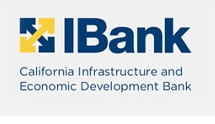Who is Small Business Development Corporation of Orange County?
Organized in 2001, Small Business Development Corporation of Orange County (SBDC-OC) is one of seven statewide quasi-public/private non-profit public charitable economic development organizations residing under the California Infrastructure & Economic Development Bank (IBank) www.ibank.ca.gov located within the Governor’s Office of Business & Economic Development (Go-BIZ) www.business.ca.gov. The organization administers California’s capital access programs supporting small business creation, growth, expansion, job creation and retention.
We are a Financial Development Corporation (FDC) and operate by separate legislation under the state’s financial code; specifically, the California Small Business Development Law as set forth in the California Corporations Code, Title 1, Division 3, Part 5, commencing with Section 14000. For more informration, read the corporation law which created Financial Development Corporations: http://bit.ly/2QT6CRq
Does SBDC-OC only serve small businesses in Orange County?
FDCs are able to serve small businesses and non-profits throughout the state of California.
Is SBDC-OC an SBA Small Business Development Center?
SBA Small Business Development Center’s (SBDC) are non-profit 501 (c)(3) as well but are involved in financial education, literacy and advocacy. They are not lenders nor are they a financial institution. They counsel (for-profit) small business owners, create business plans, conduct outreach and are the prime conduit for SBA’s external advocacy arm. Their funding mostly comes from the Small Business Administration (SBA), the only similarity they have to SBDC-OC is our acronym’s “SBDC.”
What is the State Loan Guarantee Program (SLGP)?
California’s loan guarantee was created by the California State legislature in 1968 utilizing public dollars to support lending efforts of banks and Community Development Financial Institutions (CDFI) as a risk mitigation alternative to providing access to capital to those companies unable to access credit but more importantly, supporting federal bank Community Reinvestment Act (CRA) requirements in terms and in particular, to those communities in greater need including low-income census tracts, women, minority-owned, veteran-owned and disabled-owned businesses.
Since inception, the program has guaranteed over 30,000 loans to lending institutions that are committed to helping small businesses grow and prosper in California, along wtih their communities. IBank offers guarantees to give lenders additional incentive to make loans to small businesses; it’s like an insurance policy for the lender.
Is it hard to get a loan guarantee?
No, relative to the required paperwork, it is not any different than obtaining a loan from any other institutions. Typically, the small business borrower has the relationship with the participating lender; the participating lender has the relationship with the FDC. Each FDC will request copies of the information prepared for the bank’s credit approval, which can be transmitted electronically. Generally, both the lender and the FDC have the same requirements.
What are the financing terms and how is the interest rate decided?
Financing qualifications are based on lender criteria. The interest rate and loan terms are negotiated between the lender and the borrower.
What are the steps involved in obtaining a state guarantee for a loan?
Generally, applicants should possess a business plan and financial projections and be prepared to submit personal and business tax returns. The public can apply directly through a participating bank or non-bank Community Development Financial Institution (CDFI) who makes the decision whether the transaction requires a credit guarantee.
More preferably, the applicant should contact one of the seven nearest statewide Financial Development Corporations in their area. The reason is twofold:
a) the FDC corporation can readily qualify the project in terms of eligibility over the telephone.
b) the FDC corporation is aware of which bank or non-bank institution is best suited to finance the project and which type of projects are compatible with that lenders wheelhouse of business being sort.
How does SBDC-OC promote the state loan guarantee program?
We promote the program through our participating financial institutions, social media, direct outreach through chambers of commerce, government economic development departments, IBank’s media markets, newsletter, website, etc.
How does SBDC-OC connect with, and involve financial institutions in the state loan guarantee program?
There are over 70 statewide participating financial institutions, both bank and non-bank entities, participating in SBLGP. This number can change regularly depending upon the creation of new lending entities, consolidation of existing bank and non-bank organizations and existing lenders who seek to become members. SBDC-OC has over 15 approved participating financial institutions in the Southern California region who utilize our programs.
Can a small business secure funding if not qualified for state loan guarantee program?
SBDC-OC offers micro-lending through our Entrepreneur Loan Fund (“ELF”) program. The program provides direct micro-credit funds to start-up’s and existing businesses unable to access traditional bank credit.
Does the CA State Program Bonds have any ratings?
Yes, CA bonds are rated.
Does IBank rate and audit the FDC’s?
As a prime contractor to the State of California each FDC corporation agrees to, and are subject to outside external audits by both IBank and the California General Services Administration. These audits are public information and available upon request. As for ratings of the FDC’s in general, IBank publishes (solely) production rankings on its website located under the CA Small Business Finance Center: ibank.ca.gov
If an FDC were to shut down, what happens to the loans? Any impact to the guarantee?
In short, there would be no impact to the guarantee, which remains a general obligation of the State Treasurer’s Office. Those funds have been set aside to protect any financial institution participating in program.






